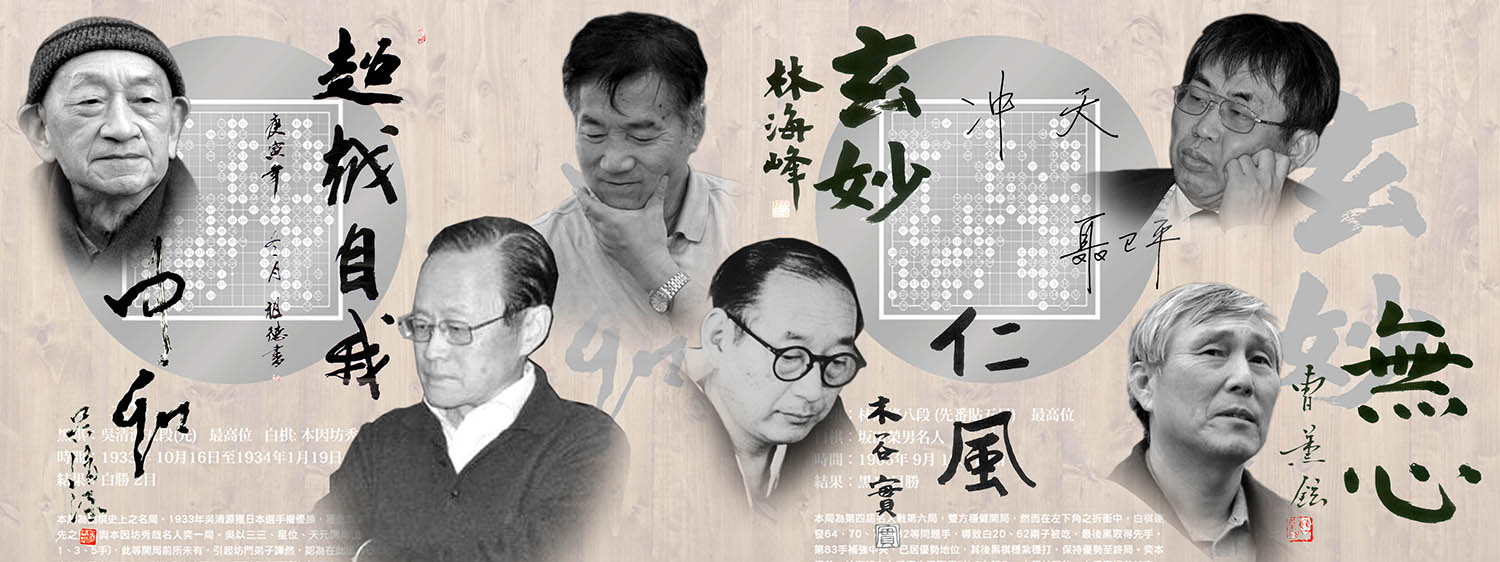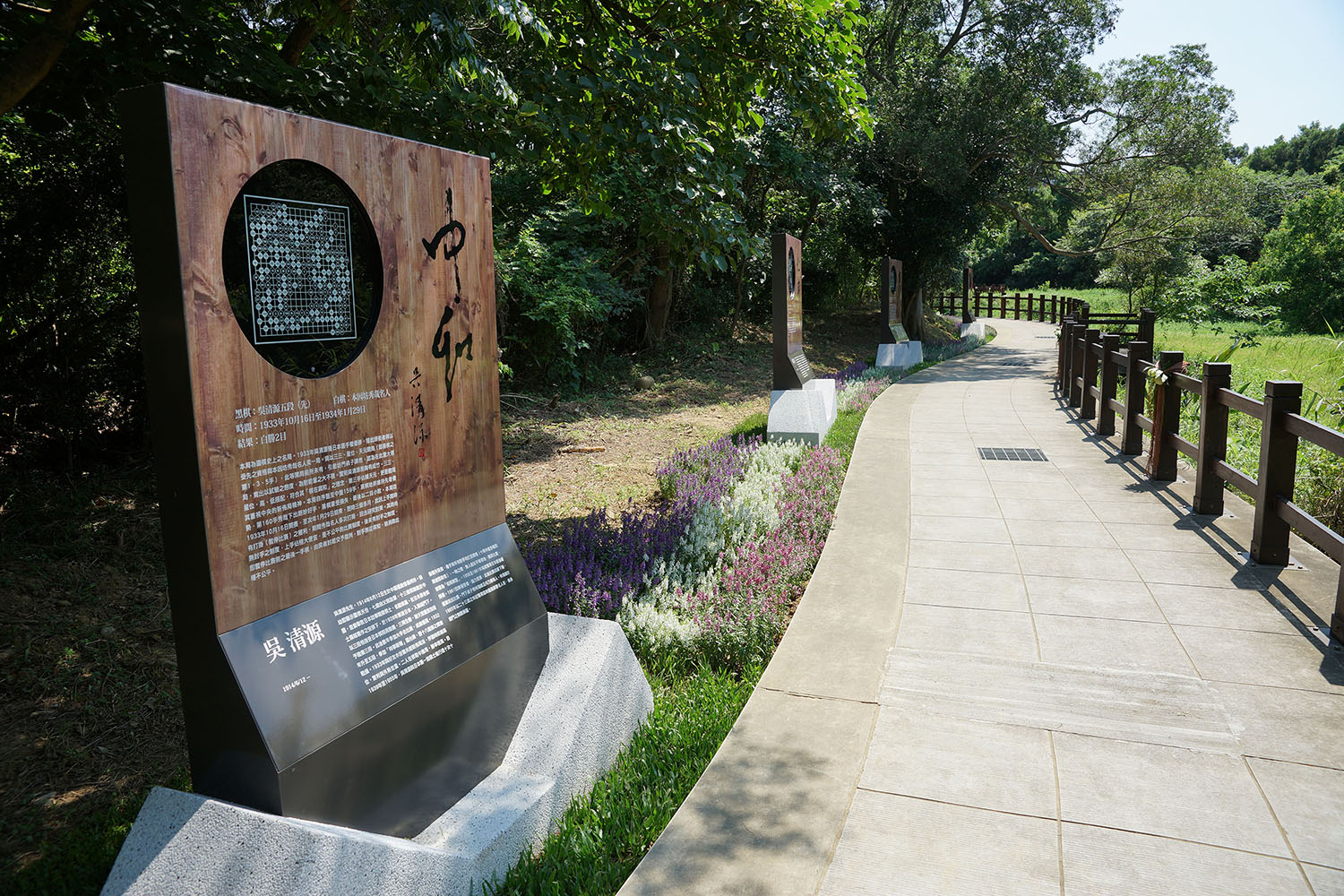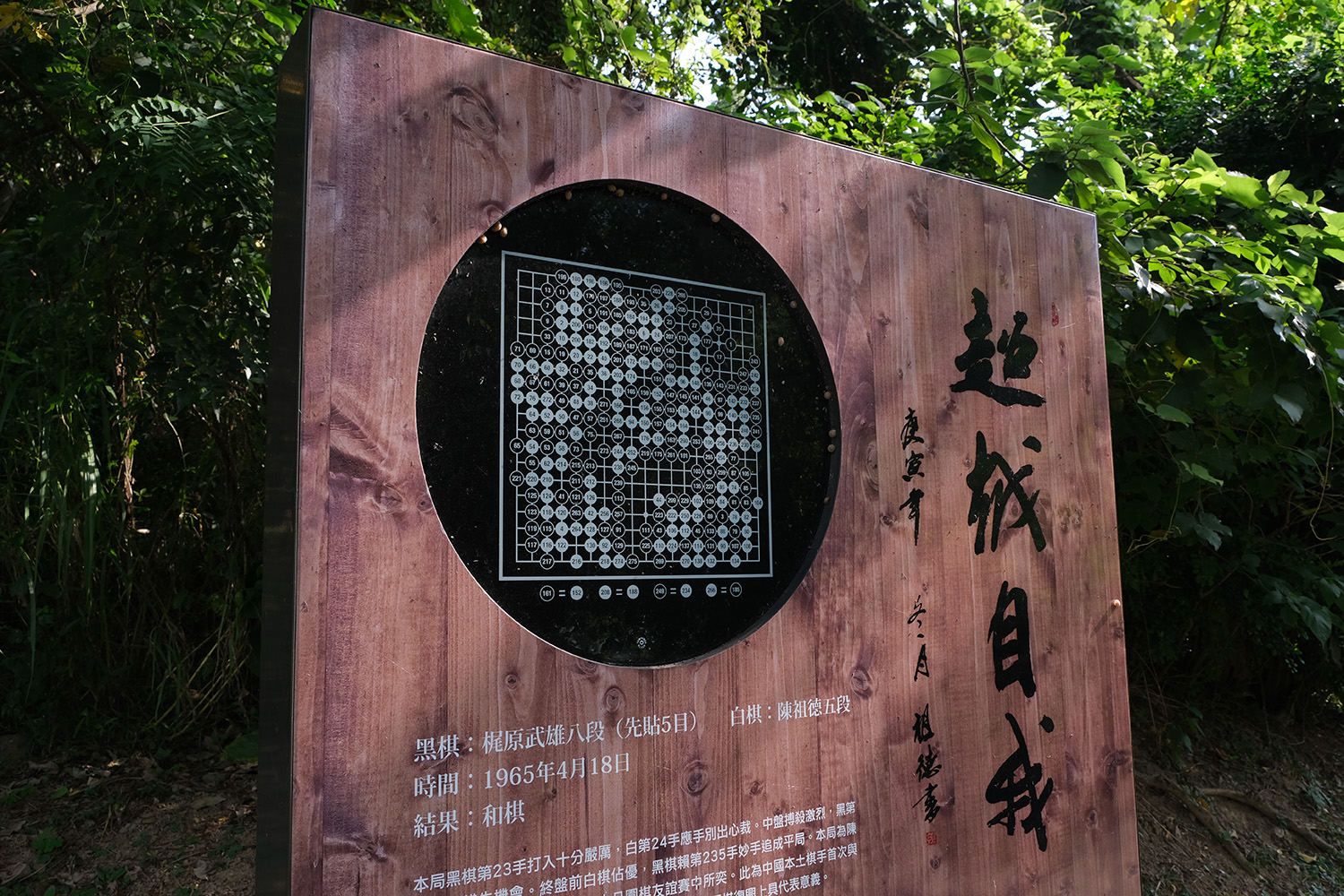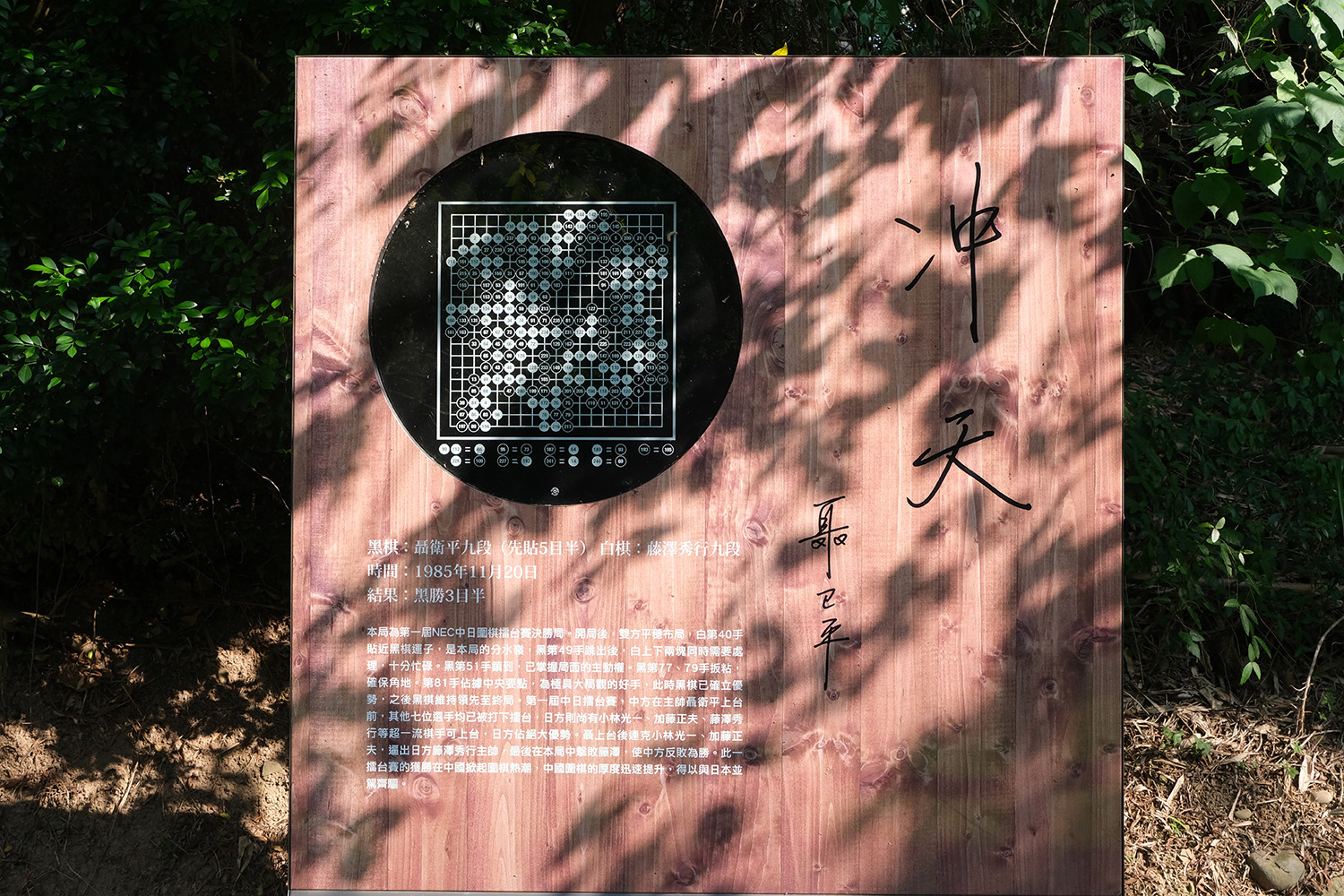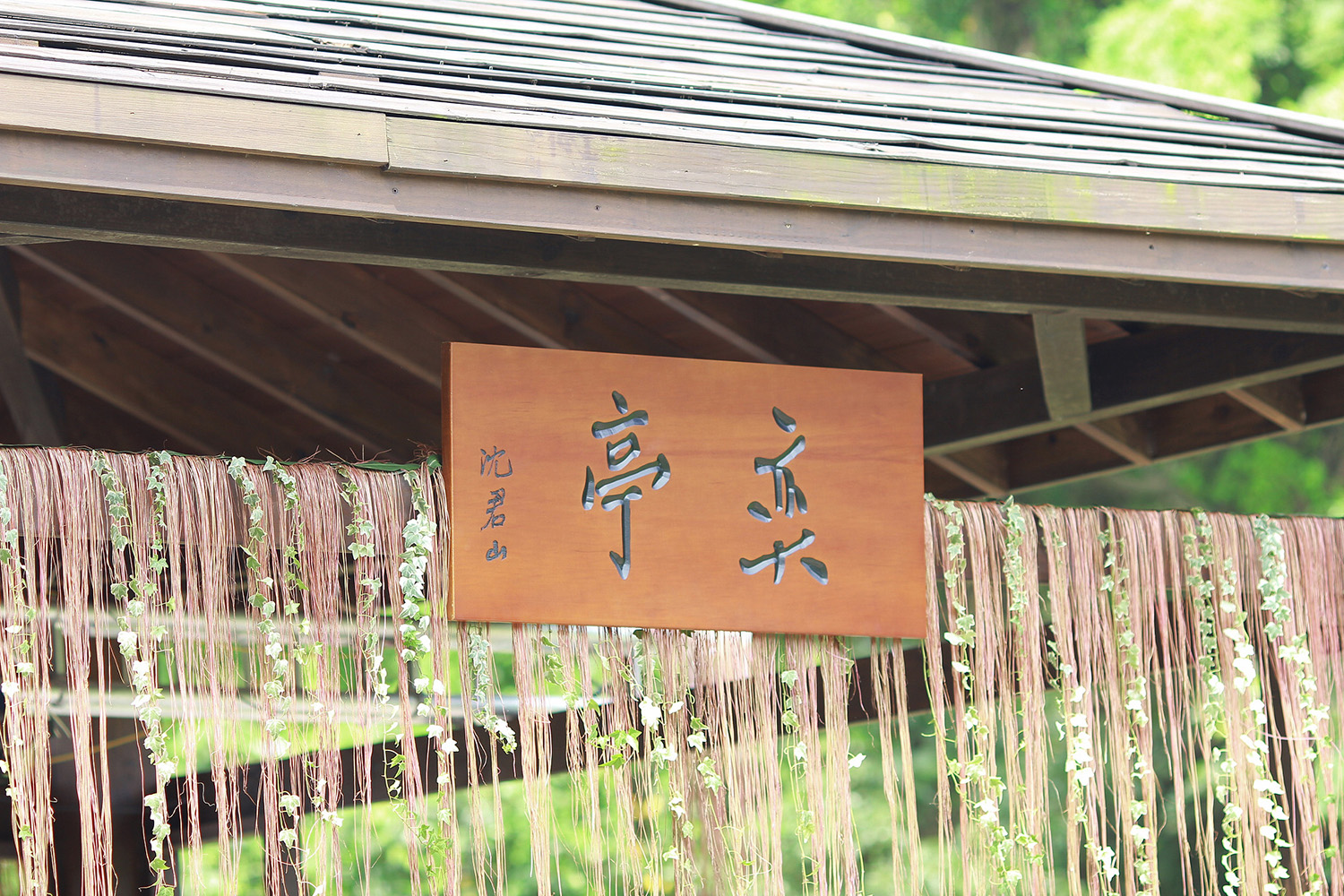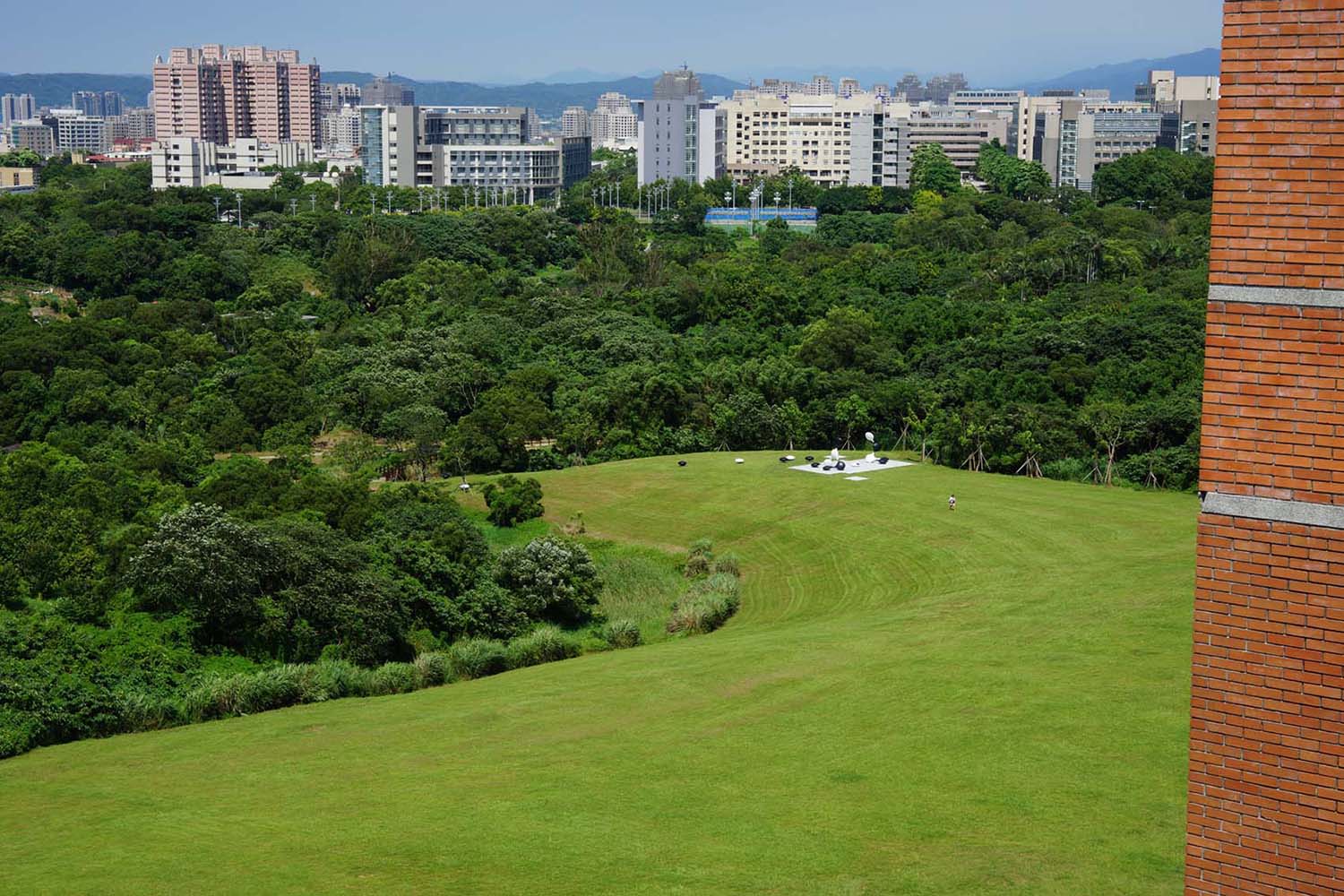以「方圓動靜」布局的奕園之美
The dynamic aesthetics of the Go Garden
入口題字
「奕園」一詞起源於1950年代,台北市新公園(今稱為和平公園)中有一弈棋處所,名喚「奕園」,當年台北的圍棋高手多在此弈棋,沈校長學生時代亦常到此處和人對弈,是其棋力養成之所,其後此處被政府收回,移作他途。此番沈校長捐園,命名為「奕園」,當亦有紀念老「奕園」之義。「奕」通「弈」,意指「下棋」,另有「美好」、「大」等意涵。
奕園入口立碑上,則以不鏽鋼蝕刻本校名譽博士金庸所題「奕園」二字。沈校長除了是金庸小說迷之外,亦與金庸「以棋會友」知交多年。立碑上的墨寶是在奕園擴建實體工程開始前,由李家維教授代表本校向金庸求得。
入口意象
藝術家楊尊智所設計的入口意象,是一顆黑、白子共為一體的棋子,由15片橫剖切面所組成,各以黑白氟碳塗料上色,使入園者所見為黑子,入園後回頭觀望則觀其爲白子,集黑白子於一體,是藝術家的巧思。
奕園緣起
鄰近奕亭的「奕園緣起」說明,由沈校長多年棋友:物理系教授蔣亨進執筆,銘記了奕園興建的緣由、過程和精神,為此項性質特殊,寄寓清華人深厚感情的公共藝術設置計畫,留下了美好的歷史見證。
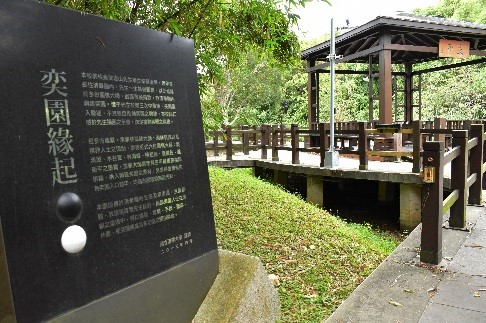
圍棋十訣
園區步道的水溝蓋上鐫刻的《圍棋十訣》,分別為:「不得貪勝、入界宜緩、攻彼顧我、棄子爭先、捨小就大、逢危須棄、慎勿輕速、動須相應、彼強自保、勢孤取和」,乃是唐朝圍棋名手王積薪所創,自古被圍棋界奉為金科玉律的要訣,例如在日本有「棋聖」之稱的本因坊秀策,便視其為座右銘,以此教授入門弟子。
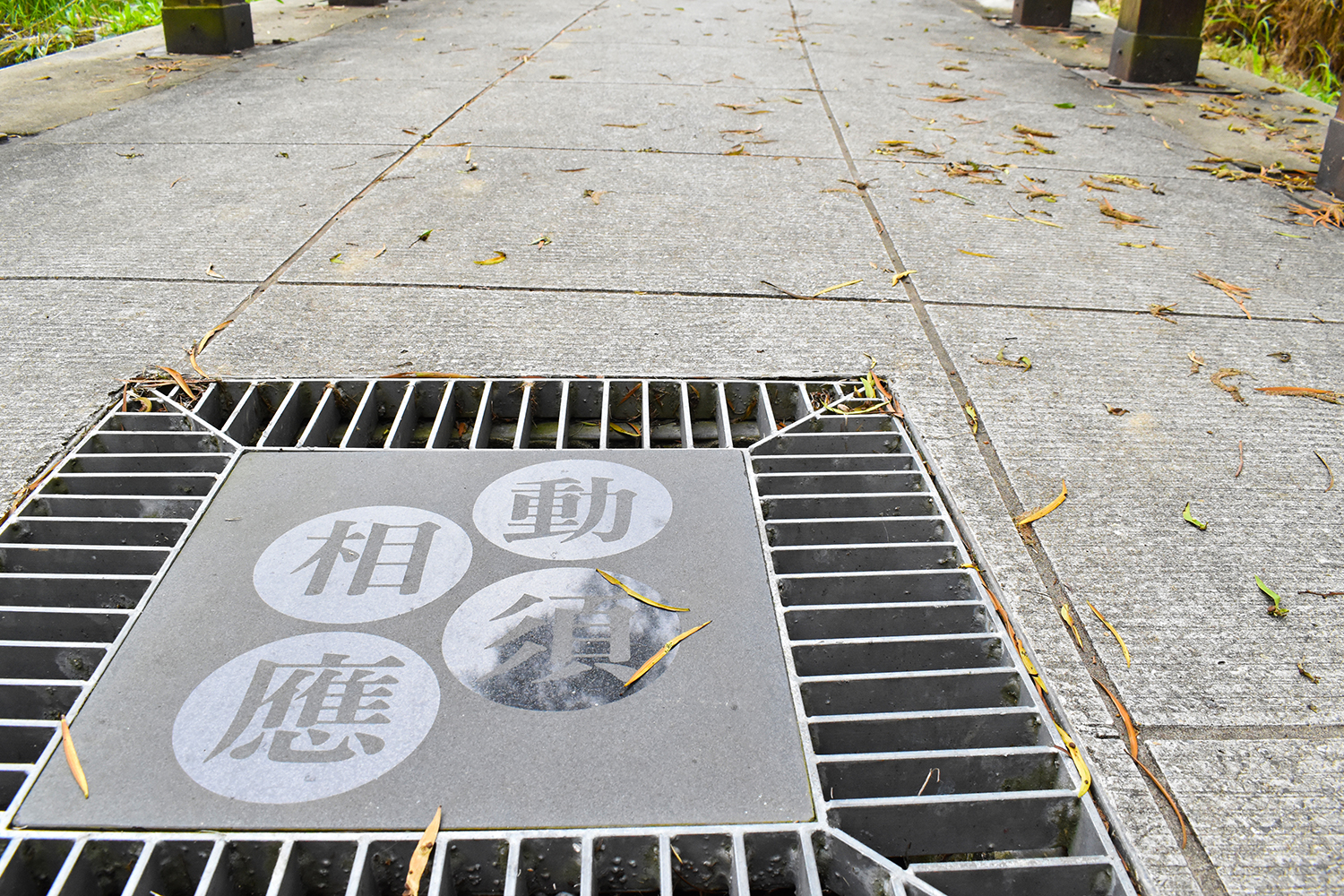
圍棋九則
奕亭周邊的木製欄杆,以「口袋書」為設計概念,設置了九項圍棋基本概念與規則說明:「斷與連、氣點、提取、禁著、眼位、死與活、共活、劫、空與地」,配以棋形說明,供人學習棋藝,據說只要知曉這些概念及規則,便可上場與人對弈。
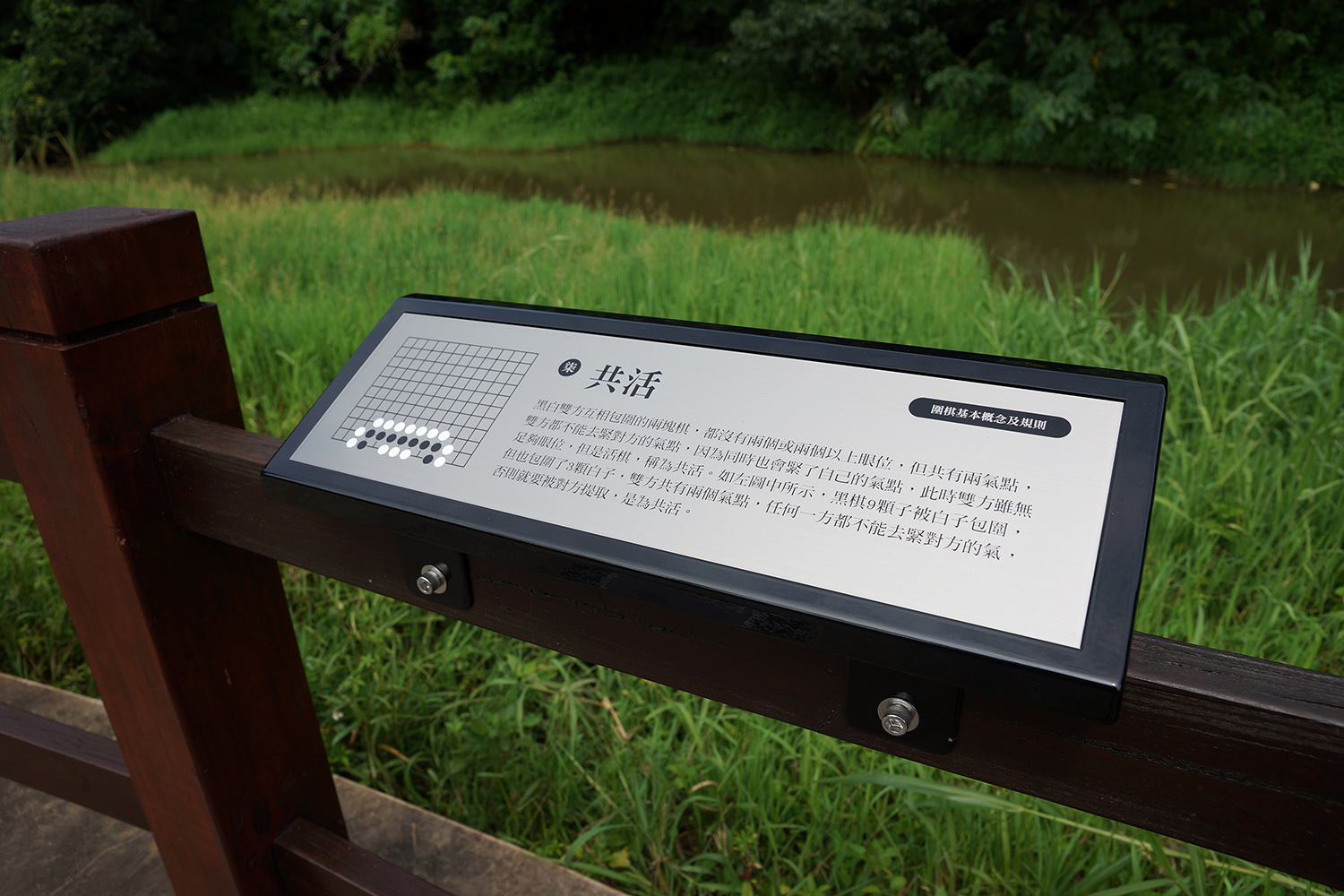
奕亭
「奕亭」二字題匾,是由沈校長個人書信、墨寶中擷取集字而成。奕亭位於奕園核心區,其中陳設一只對弈桌,使民眾不僅能於此處休憩賞景,也能於自然風月間,享受對弈的樂趣。
奕園周遭景觀保留了大量原始地貌,其中天然湧泉規劃為濕地生態區,崎嶇坡地則保留為森林區,使其生態及物種至今得以生生不息。
對奕‧對藝
公共藝術作品「對奕‧對藝」以「方、圓、動、靜」的視覺能量交錯,企圖於立體空間中呈現出「圍棋棋盤中的攻防關係」。棋盤上如人形扭轉之立體棋子,則營造出彷彿「華山論劍」般的對弈氣勢。
除作品本身的獨特性外,在環境佈局上亦深具細膩的安排:奕園主要位於溼地生態區內,「對奕‧對藝」則設置在較高處的草坪之上,一則是為了配合動線的延伸,將視覺焦點一路引至敞亮寬闊的平台,使雕塑主體更具氣勢;另一方面則是楊尊智特別考量到設置精神:土木興建盡量以不破壞生態園區原有樣貌為準則,故作此用心的規畫。
至於園區和大草原區之間,藝術家則以分散於草地上的黑白棋子巧妙連結,引導行走於木棧道上的遊客從鬱鬱蔥蔥的生態園區,進入寬闊的草原坡面,峰迴路轉之中,隱喻如下圍棋時,沉吟思索「下一步」的氛圍體驗,忽然又柳暗花明,豁然開朗。
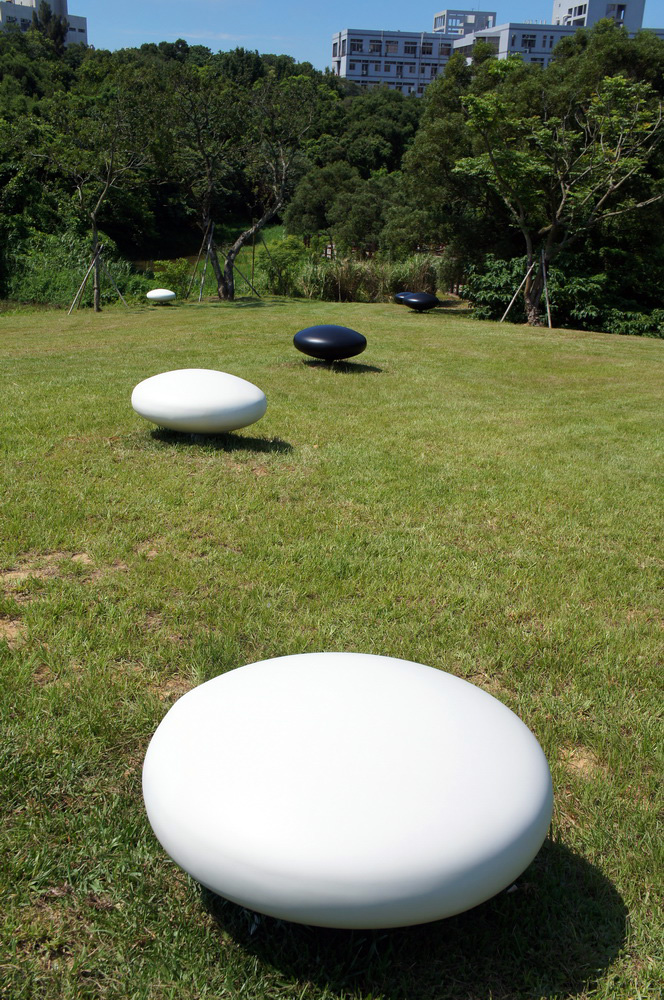
The dynamic aesthetics of the Go Garden
Inscription at entrance
The Go Garden is named after the Go garden which once existed in Taipei's New Park (later renamed the 228 Peace Memorial Park), where Shen used to play Go during his student days in the 1950s.
Origins of the Go Garden
Near the Go Pavilion is a stele describing in detail the origins of the Go Garden, written by Shen's Go partner Professor Heng-ching Chiang of the Department of Physics.
Go masters
Alongside the Go Path are six steles commemorating recent Go masters, including biographies, famous matches, and reproductions of their calligraphy. They appear in the following order:
- Seigen Go (吳清源)
- Minoru Kitani (木谷實)
- Hai-feng Lin (林海峰)
- Zu-de Chen (陳祖德)
- Hun-hyun Cho (曹薰鉉)
- Wei-ping Nie (聶衛平)
The ten commandments of Go
The main pathway through the Go Garden features paving slabs inscribed with “the ten commandments of Go,” formulated by Ji-xin Wang (王積薪) during the Tang dynasty, and ever since regarded as infallible laws by Go enthusiasts worldwide. They are:
Don't covet success. Don't be in a hurry to enter your opponent's territory. Take care of defense when attacking. Discard a stone to gain the lead. Abandon small to get big. When in danger, sacrifice. Never take a move lightly. Each move must respond to the opponent. When the opponent is strong, think of the way to protect yourself. When weak, avoid battle.
The nine principles of Go
Next to the Go Pavilion are nine plaques inscribed with the “nine principles of Go,” familiarity with which is essential to mastery of the game. They are: Disconnection and connection; point of vital energy; extraction; restraint; eye position; life and death; coexistence; sacrifice; and sky and earth.
Go Pavilion
Located at the center of the Go Garden, this simple wooden pavilion features a table with an inlaid Go board. The calligraphy on the name plaque under the eave was written by Shen.
Laid out in accordance with the original topography, this designated ecological zone features a natural carbonated cold spring, providing an ideal location for a Go match or for simply relaxing.
Confrontation, Conversation
Confrontation, Conversation consists of a huge granite Go board on which the upright playing pieces made of stainless steel plates and copper bars seem to be dancing, creating a dynamic visual effect within three-dimensional space. This sculpture is situated on a large lawn, somewhat higher than the adjacent wetland, in order to accentuate its imposing momentum, and also to avoid disturbing the ecologically sensitive wetland.
Scattered about the adjacent lawn are black and white Go stones which usher the visitor out of the lush and verdant Go Garden and onto the broad lawn flooded with sunlight, representing the sudden breakthrough which takes place in the strategic thinking process of the Go player.

